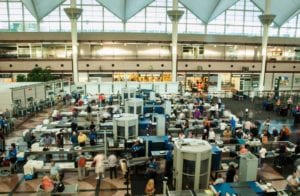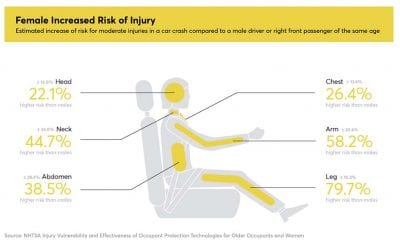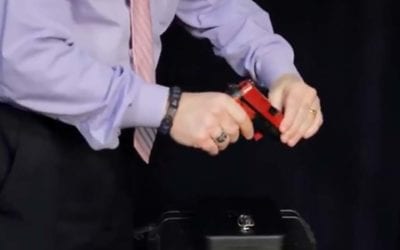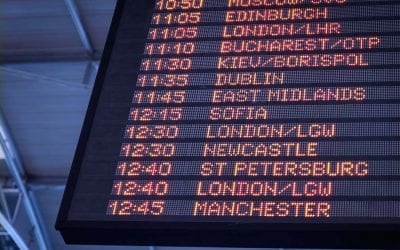Unvetted travelers are a danger in TSA PreCheck lanes

• Transportation Security Officers (TSO) keep the TSA PreCheck x-ray conveyor belts moving. That hinders TSOs’ ability to adequately check questionable items in carry-ons as seen on their screens.
• TSA turned off the automated settings of x-ray machines on TSA PreCheck conveyor belts that flag suspicious items in carry-ons.
• TSA reduced the sensitivity of walk-through metal detectors to below levels set in the years immediately following 9/11. Walk-through metal detectors are primarily used on TSA PreCheck lines.
The whistleblower’s allegations are more serious than most travelers think.
These allegations are far more serious than they seem. The problem is that TSA allows non-PreCheck members, who haven’t gone through the extra background checks, into PreCheck lanes.
If you rarely fly, you’ve likely heard about TSA PreCheck. But you might not know exactly what it is. TSA PreCheck is one of the Department of Homeland Security’s (DHS) Trusted Traveler programs. PreCheck members undergo and pass an extensive background check. Members are almost always permitted to use the streamlined PreCheck security lane at U.S. airports.
TSA has been steadfast in maintaining that it’s crucial to carefully examine the general air traveling public. That includes their clothing and belongings with full-body scanners and enhanced patdowns. TSA has set up explosive trace detection (ETD) and x-ray units for travelers’ belongings. They test the system to maintain quality security for the air traveling public.
READ ALSO: Know these insider tips for PreCheck and Global Entry
The TSA PreCheck lanes use reduced security procedures only because PreCheck members have had their backgrounds vetted. The PreCheck lanes use metal detectors, not full-body scanners. Travelers in them may keep on their shoes and belts. Laptops and other electronic gear remain packed in travelers’ carry-ons. Passengers in the PreCheck lanes are rarely if ever, required to submit to a patdown or explosive trace detection procedure.
TSA is defying its mandate to protect the public from terrorism
It’s unfathomable to me that TSA permits unvetted, non-Trusted Travelers to use PreCheck lanes at any time. There should be no difference whether standard airport security lines are moving rapidly or not. By allowing unvetted travelers in the PreCheck lanes, TSA is subverting their work and defying their mandate to protect the public from terrorism.
TSA promised to stop permitting non-Trusted Travelers to use TSA PreCheck lanes a year ago. However, they haven’t kept that promise. TSA hasn’t publicly set a timetable to implement this critical safety protocol.
Congress introduced the Precheck Act of 2018
Some members of Congress tried to force TSA to end the practice of putting unvetted travelers through lighter security. For years travelers complained about unvetted travelers in the PreCheck lanes, US Congress members proposed the PreCheck is PreCheck Act of 2018 (H.R. 6265).
The Act mandated that TSA ensured that only members of a trusted traveler program were permitted to use TSA PreCheck lanes at airport security checkpoints.
There are five US government trusted traveler programs. They include PreCheck. Global Entry, and NEXUS programs. Two other programs don’t include PreCheck. In addition to Precheck, Global Entry permits expedited international arrival processing and NEXUS permits expedited travel between the US and Canada.
The Act, with a few exceptions, would have required non-trusted travelers to use the higher-level standard security lanes. Children under the age of 13 or seniors over the age of 74, traveling with trusted travelers, could use the PreCheck lanes. In addition, certain members of the US Armed Forces and veterans could use PreCheck lanes under the Act.
ALSO ON TRAVELERS UNITED BLOG: Should travelers use biometric data security at the border?
The U.S. Senate let the PreCheck is PreCheck Act of 2018 die
Unfortunately, while the PreCheck is PreCheck Act of 2018 was passed by the U.S. House of Representatives, the U.S. Senate let the Act die.
As it is, TSA, when following its procedures and protocols to the letter, hasn’t been known for being a stellar performer. In 2015, TSA flunked their internal security tests badly. That year they failed to detect smuggled weapons and explosives at airport security checkpoints 96 percent of the time. A couple of years later, undercover agents successfully sneaked in 17 of 18 weapons and explosives through security checkpoints. That was a 94 percent failure rate for TSOs. Since then, I think it’s safe to assume that further undercover tests, if any, didn’t go well, since there’s been no mention of them.
With its record of failures — and now, with serious allegations of them reducing the effectiveness of their security protocols — TSA should immediately halt permitting unvetted travelers to use TSA PreCheck lanes at all U.S. airports. TSA must, for the first time, only permit trusted travelers to use their PreCheck lanes. Then, TSA should immediately begin to reexamine all of its procedures and protocols, to recalibrate them into a system that actually makes sense.
After many years working in corporate America as a chemical engineer, executive and eventually CFO of a multinational manufacturer, Ned founded a tech consulting company and later restarted NSL Photography, his photography business. Before entering the corporate world, Ned worked as a Public Health Engineer for the Philadelphia Department of Public Health. As a well known corporate, travel and wildlife photographer, Ned travels the world writing about travel and photography, as well as running photography workshops, seminars and photowalks. Visit Ned’s Photography Blog and Galleries.



